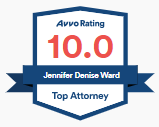For small business owners, hiring a first employee is a very important step. The employer must comply with a range of laws as soon as that first employee comes on board.
Be Aware of Reporting Requirements
An employer's first obligation is to comply with Texas and federal reporting laws. The new hire will need to fill out an I-9 form. Businesses must report new employees to state and federal agencies within twenty (20) days of the start of employment.
Federal Laws Protect Employees
Several important federal laws protect employees where a business has one or more employees. The Federal Labor Standards Act (FLSA) sets out the minimum wage and overtime laws we are all accustomed to in the U.S. The Occupational Safety and Health Act (OSHA) protects the health and safety of workers. Businesses must comply with these laws as soon as they hire their first employee. Other important federal statutes, including Title VII and the Family Medical Leave Act, only restrict businesses with more people on the payroll.
Some Texas Employment Laws Also Apply
Several state-level protections are triggered by the first hiring. The Texas Payday Act governs how and when employees get paid. It spells out state requirements for minimum wage, overtime pay, timely wages, and illegal deductions. Employers must also comply with the Unemployment Compensation Act. Even employees who work for an employer for as little as a single day may be eligible for unemployment benefits through that employer.
There Are Workplace Posting Requirements
Employers must provide workers with information regarding their rights by posting various types of information in a visible location within the workplace. They must provide or post informational materials about Workers' Compensation, the FLSA, OSHA, the Texas Payday Act, and other laws. Many of these posters are available for free through agency websites.
Ongoing Compliance Is Key
For employers with one or more employees, it is important to check and update their informational posters periodically. The Texas Workforce Commission website is a great resource for this purpose. They should also review whether they are in full compliance with all relevant employment laws. An experienced employment law attorney is in the best position to evaluate and advise on compliance issues.









